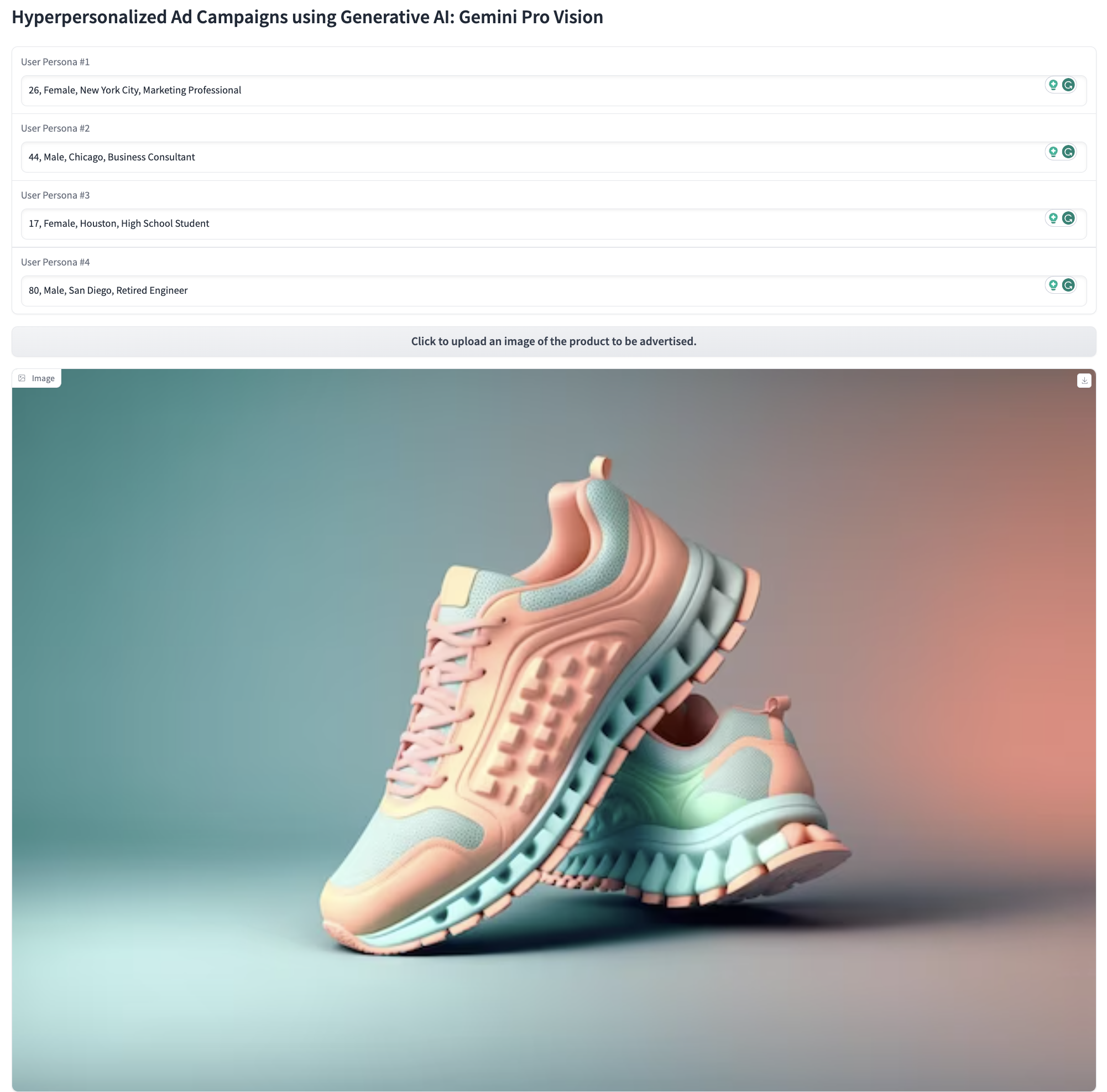Hyper-Personalized Ad Campaigns using Generative AI + Quick Demo using Google Gemini Pro Vision 🎯
In the vast and ever-evolving landscape of online advertising, campaigns come in various forms, each with its unique approach to capturing the attention and imagination of internet users. Here is a fascinating spectrum of ad campaigns, from general to personalized and thereafter hyper-personalized.
Off The Racks: General Ad Campaigns
Imagine a town crier in the bustling digital marketplace, ringing their bell and shouting the message to the entire crowd 📣 Similarly, general ad campaigns broadcast a brand's message to a wide audience with the hope that it will resonate with at least a portion of the online population!

Let us take the example of the latest smartphone by a company called Blueberry 🫐 Blueberry launches an ad campaign featuring the phone's sleek design and advanced features. This campaign is shown to a broad audience without any tweaks across multiple websites, social platforms, and apps, aiming to create awareness and generate interest in the general population.
TL;DR General Ad Campaigns
The Friendly Tailor: Personalized Ad Campaigns
Think of them as a skilled tailor who takes note of your preferences and style. In online advertising, this involves using data (such as your browsing history, search terms, and basic demographics) to deliver more relevant ads. It's like stepping into a store where the racks magically display items in your favorite colors and styles!

Imagine you have been browsing travel blogs and websites about tropical destinations 🏝️ The next time you are online, you start seeing ads for beach resorts, flights to exotic islands, and travel packages that align with your apparent interests - this is what personalized ads look like.
TL;DR Personalized Ad Campaigns
Your Personal Stylist: Hyper-Personalized Ad Campaigns
Now, picture having your own personal stylist who knows your tastes inside-out, anticipates your needs, and delights you with spot-on recommendations! Hyper-personalized ad campaigns strive to achieve this level of intimacy in the digital world. They leverage AI to analyze a vast array of data points, creating ads that feel incredibly personal and timely ⌚️

Suppose it is a hot summer day and your real-time location data shows you are strolling near a popular ice cream parlor 🍦 Suddenly, you receive a notification or see an ad on your phone offering a refreshing discount on a cold treat - just when you need it the most!
TL;DR Hyper-Personalized Ad Campaigns
Precision or Privacy? 🔐 As ad personalization becomes more sophisticated, it is essential to remember the importance of user privacy and ethical data collection. Consumers should be aware of how their data is used and have control over it. Responsible advertisers seek a balance between creating engaging ad experiences and respecting user privacy.
How can Generative AI help create hyper-personalized ad campaigns?
Leveraging Generative AI for ads hyper-personalization is an exciting frontier in online advertising. Specifically with LLMs’ ability to process and generate human-like text, we can revolutionize how we personalize ads in real-time.
Dynamic Content Generation
Real-Time Contextual Understanding
Enhanced Conversational Interactions
Consider this use case → A sports apparel brand uses LLMs for hyper-personalized ads. The LLM analyzes a user's data and learns that:
The LLM can then generate an ad on the fly featuring: Personalized running shoe recommendations based on browsing history. An invitation to join a sponsored running event in their area. A motivational message referencing the sunny weather, encouraging an outdoor run.
Quick Demo Using Gemini Pro Vision
The following demo takes in a product image and generates personalized ad strategies, copy text and quirky hashtags for promotion purposes. It is an initial version where a user persona can be simply described as their age, gender, location, and occupation. Feel free to check it out here: github.com/jigyasa-grover/Hyper-Personalized-Ad-Campaigns-using-Generative-AI-Quick-Demo-using-Gemini-Pro-Vision 👀


Before you dive into leveraging LLMs to create hyper-personalized ad campaigns, here are some key considerations and tips 👀
By harnessing the power of LLMs, online advertising can become more engaging, relevant, and effective, delivering an enhanced experience for users while driving better results for advertisers ✨